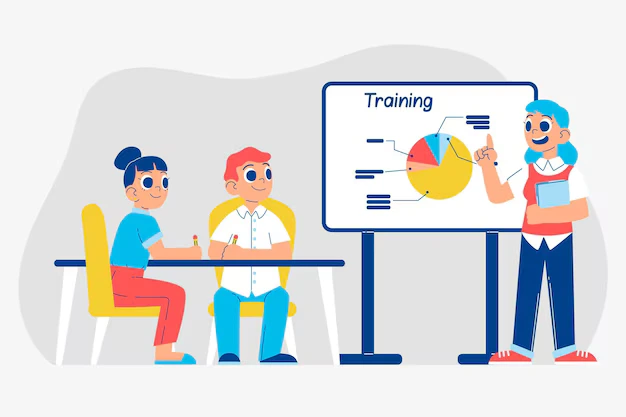The Optional Practical Training (OPT) programme has garnered attention, particularly amid the political debates surrounding US immigration policies, including those advocated by President-elect Donald Trump’s ‘Make America Great Again’ (MAGA) initiative. As a key pathway for international students to gain work experience in the United States, the OPT programme offers students the chance to enhance their employability and secure opportunities in the competitive US job market. Here’s a detailed explanation of the programme, its benefits, and its challenges.
What is Optional Practical Training (OPT) Programme?
The OPT programme allows international students on an F-1 visa to work temporarily in the US in a field directly related to their area of study. Students can work for up to 12 months in roles directly related to their major. This programme provides students with an opportunity to gain practical experience, which significantly boosts their employability prospects after graduation. The OPT programme is divided into two types:
- Pre-completion OPT: This allows students to work part-time while still enrolled in their academic programme and full-time during breaks.
- Post-completion OPT: After graduation, students can work at least 20 hours per week in roles related to their degree.
Eligibility Criteria for Optional Practical Training (OPT)
To be eligible for the OPT programme, international students must meet the following criteria:
- Full-time enrollment: Students must be enrolled full-time for at least one academic year.
- Application process: Students must apply through their academic institution, which recommends them for OPT. The United States Citizenship and Immigration Services (USCIS) handles the application process.
- F-1 status: Students must maintain their F-1 visa status to remain in the US while working under the OPT programme.
Extension for STEM Graduates
For students graduating in fields such as Science, Technology, Engineering, and Mathematics (STEM), there is an opportunity to extend their post-completion OPT by an additional 24 months. This extension allows STEM graduates to work in the US for a total of three years. The USCIS has a list of eligible degree programmes for this extension, which helps bridge the gap between education and employment in the technology and science sectors.
Current Statistics on Optional Practical Training (OPT) Participation
As of the 2023-24 Open Doors data, approximately 27.47% of the 883,000 international students in the US are participating in the OPT programme. Among the 331,000 Indian students, 29.42% are enrolled in OPT. This reflects an increase in the participation of Indian students, especially in STEM courses such as engineering and computer science.
Key Criticisms of the OPT Programme
The OPT programme has faced criticism from various quarters, especially from MAGA supporters and groups like WashTech. Critics argue that:
- The programme lacks Congressional approval and is seen as competing with US graduates for jobs.
- The STEM OPT extension is seen as giving unfair advantage to foreign workers, with claims that it displaces jobs for American college graduates.
- In 2023, WashTech, a technology worker advocacy group, challenged the STEM OPT extension in the Supreme Court, but the court declined to review the case, effectively upholding the programme’s validity.
Future of the OPT Programme
The future of the OPT programme remains uncertain, especially with ongoing debates over US immigration policy. Changing administrations and shifts in public opinion may lead to modifications in the programme’s structure. However, despite the challenges, the OPT programme remains a crucial component for international students pursuing educational and professional opportunities in the US.
Connection to the MAGA Movement
The MAGA movement, led by Donald Trump, advocates for policies that prioritize American jobs and immigration control. The movement emphasizes economic protectionism and reduced immigration, particularly from developing countries. Under this ideology, programmes like OPT, especially the STEM extension, face opposition from critics who believe such programmes undermine American workers. Key aspects of MAGA’s stance on immigration include:
- Economic Protectionism: Policies such as tariffs and opposition to globalization that are seen as beneficial for US industries.
- Immigration Control: Restricting immigration, with policies like the 2017 Muslim Ban and the proposal for a border wall between the US and Mexico.
Summary of Key Points:
- The Optional Practical Training (OPT) programme allows F-1 visa holders to work in the US in fields related to their studies.
- STEM graduates can extend their OPT for an additional 24 months, giving them a total of three years of work experience in the US.
- Approximately 27.47% of international students are participating in OPT, with Indian students making up the largest cohort.
- The MAGA movement has raised concerns about the impact of OPT on American workers, especially regarding the STEM extension.
- The future of Optional Practical Training (OPT) is uncertain, and changes in US immigration policies may reshape its role in the educational and job landscape.
As debates surrounding immigration and job security continue, the Optional Practical Training (OPT) programme’s fate will likely depend on political and public sentiment, influencing its role in the US’s evolving labor market and educational opportunities.
Also Read: Norovirus Surge in the US
Disclaimer
This article is for educational purposes, focusing on the relevance of the topic for UPSC aspirants. Students should stay updated on further developments and refer to official sources for comprehensive preparation.
Follow Fusion IAS

